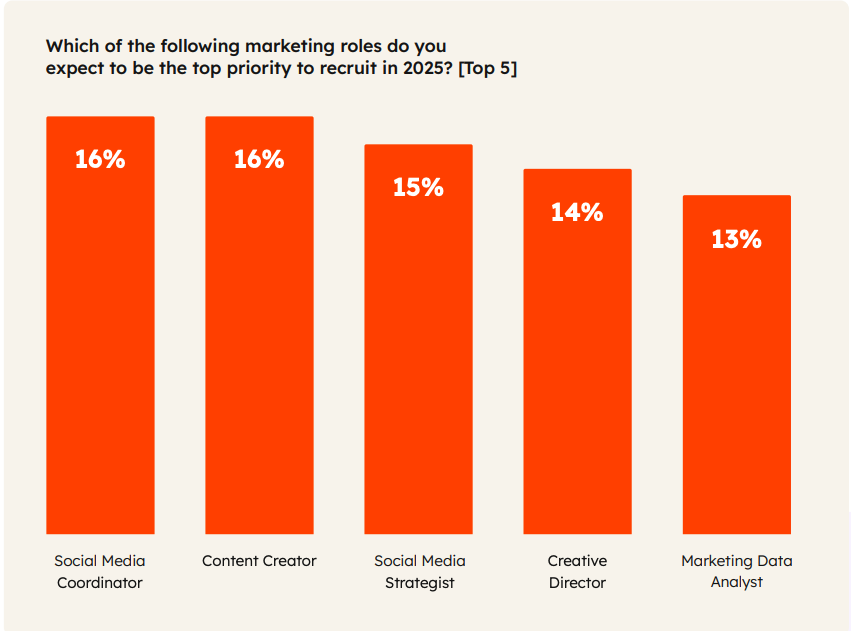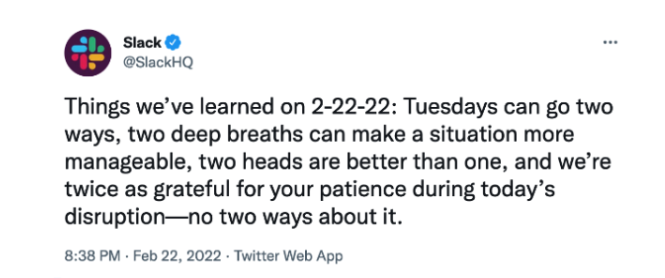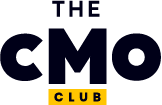Social media management is the process of managing and optimizing how your brand shows up and engages with your audience across digital platforms, in order to achieve business goals. In SaaS, social media management is a high-impact growth lever that shapes everything from how your company is perceived in the market to how fast leads convert.
For CMOs and growth leaders, social media is essential. Treat this article as your launchpad—get clear on what social media management is in 2025, then use it to drive brand momentum, audience growth, and measurable pipeline impact.
What Is Social Media Management?
Social media management is how brands grow awareness, build trust, and drive pipeline through strategic use of social platforms like LinkedIn, Instagram, X (formerly Twitter), and TikTok.
Done right, it looks like:
- Creating and publishing content that meets your audience where they are
- Showing up with a consistent point of view that resonates with your ICP
- Listening to what your market is saying—and using it to shape messaging
- Integrating brand storytelling, customer marketing, and demand gen
- Analyzing data to prove impact across awareness, engagement, and revenue
Your audience is already there—scrolling, sharing, comparing, and deciding. The opportunity? Show up consistently with something they actually care about: sharp insights, real value, and a point of view that sticks.
The Evolution of Social Media Management
Social media management has outgrown its scrappy early days. What matters now is how you evolve with it—how you scale it, align it across functions, and prove its value to the boardroom.
Modern social media management is:
- Omnichannel (LinkedIn, X, TikTok, Threads, Reddit, Slack communities, and yes, even Discord)
- Data-driven (CTR, engagement rate, follower quality, lead attribution)
- Integrated with marketing, sales, CS, and product
And it's expanding fast. Social commerce is becoming table stakes, with platforms like Instagram and TikTok rolling out native shopping tools. According to one study by Accenture, social commerce is growing at a CAGR of 26% and will account for $1.2 Trillion worth of business in 2025. Influencer marketing is also maturing. Nearly 60% of B2B marketers say it's more effective than traditional content, especially when partnering with niche creators. Meanwhile, social listening is evolving from basic brand mentions to full-on competitive intelligence.
Tools like HubSpot and Hootsuite have matured, but so have expectations. You’re no longer judged on likes. You’re judged on pipeline. And increasingly, your ability to spot trends early and capitalize fast.
The Role of a Social Media Manager
The role of a social media manager today is varied and expansive. They are part content strategist, part community builder, part data analyst, and part crisis manager. They track sentiment trends, manage editorial calendars, jump into customer DMs, and sometimes still write the posts!
Here are some of the top social media roles that marketing leaders are hiring for in 2025 (HubSpot State of Marketing Report 2025):

If you’re looking to hire, here are the skills you want in your social media marketing manager:
- Cross-functional operator: Aligns with sales, CS, product, and brand.
- Tool-savvy: Fluent in HubSpot, Hootsuite, Sprout Social, Brandwatch, etc.
- Trend-spotter: Turns market shifts into content opportunities.
- Creator collaborator: Builds real partnerships with influencers and experts.
- Strategy-to-execution thinker: Connects the brand vision to pipeline-driving posts.
- Crisis-ready: Calm, fast, and on-brand under pressure
Pro Tip: Prioritize strategic thinking and writing clarity over platform-specific hacks. Tools change but voice and POV can be scaled over time.
How to Manage Social Media Accounts
Here are four ways you can manage your social media accounts:
Diversify Your Networks
Go beyond LinkedIn by building a multi-platform presence that reflects where your ICP actually hangs out. Today’s B2B buyer journey isn’t linear, and your prospects aren’t confined to one platform. They’re absorbing signals across channels, comparing you to competitors, vetting your credibility, and even checking how your team thinks. By diversifying, you reduce risk, broaden reach, and create more surface area for influence. It also opens up channel-specific strengths.
- Tap into Reddit for AMAs and technical discussions
- Use YouTube Shorts for quick feature walkthroughs
- Experiment with Threads to build thought leadership in public
- Leverage Instagram Reels or X (formerly Twitter) for lightweight, brand-driven engagement
Build your social media workflow around core content repurposing. Start with a core asset (like a webinar, product launch, or founder AMA), then repurpose it into native formats across platforms. Use Notion or Airtable to map the distribution plan. This will allow you to scale without burning out your team.
Keep An Ear to the Ground
Use social listening tools to monitor brand mentions, competitor activity, customer sentiment, and broader industry conversations.
Go beyond vanity metrics. Track the nuances: what your users are frustrated with, what your competitors are promising (but not delivering), and what your market is craving. Tools like Brandwatch, Sprinklr, or even native features in Sprout Social can give you a real-time pulse.
To take things up a notch, set up dedicated Slack channels for real-time social insights, and route relevant intel to marketing, product, and CX teams. Automate alerts for high-value keywords (like your brand name + “pricing” or “alternative to [competitor]”) and use that signal to fuel both proactive content and quick-turn responses. Assign a team member to do a weekly “social pulse” report on what’s trending, what’s bubbling, and what your brand should say next.
Embrace Automation and AI
Leverage automation and AI tools to streamline social workflows, eliminate bottlenecks, and scale content production without sacrificing quality.
Automation will keep your brand active and consistent across time zones, while AI will augment creative velocity without burning out your team. During product launches or campaign crunches, it could mean the difference between hitting your deadline or missing a key moment. More importantly, these tools will give marketers space to focus on high-leverage work: strategy, storytelling, and engagement.
Pro Tip: Treat AI as a junior copywriter, not a strategist. Always layer in human editing and brand voice to avoid generic output. Build templates and prompts tailored to your ICP and tone, especially for repeatable content types like feature highlights or customer quotes.
Measure ROI With Social Data
You’ll need to go beyond likes and impressions by building a measurement stack that includes UTM-tracked links, funnel attribution (first vs. last touch), CRM integration, and sentiment scoring. Map social content to business outcomes, and don’t be afraid to challenge assumptions about what’s “top of funnel” versus pipeline-driving.
Proving social ROI will turn your social motion into a defensible budget line. It’ll help you advocate for more resources, influence GTM strategy, and show up stronger in the boardroom. Without this data, you’re flying blind, and underselling your team’s real impact.
Start with one clear conversion point, like demo requests or free trial signups, and trace how social content influences those actions.
Social Media Planning and Content Creation
Content is the engine of your social strategy. Everything else runs on it. Without a clear plan, you’re just posting into the void.
Here’s what a strong content strategy includes:
- Start with a situational audit: What’s working? What’s not? Review your existing content mix, engagement patterns, SEO signals, and ad performance.
- Define your ICPs: Go beyond basic personas. Include buying triggers, pain points, and platform behaviors so content actually resonates.
- Set clear, measurable goals: Think “drive 20% more demo conversions from LinkedIn” vs. “grow followers.” Anchor goals to business outcomes.
- Map your distribution plan: Choose channels intentionally. Build a weekly cadence that blends formats (e.g. Mon = how-to post, Wed = product clip, Fri = customer quote).
Use a content calendar to keep it all aligned. A clear calendar will help you stay consistent, reduce content churn, and keep your team working from the same playbook.
Managing Your Reputation on Social
Reputation management is about shaping how your brand is perceived, especially when things go sideways. In SaaS, that could mean pricing backlash, outages, or executive missteps—and social is usually where it breaks first.
As you know, SaaS brands live and die by trust. A single mishandled situation on social media can cost your brand its credibility, loyalty, and even revenue. Worse, silence or slow response times send a signal that you’re either not paying attention or don’t care. But when handled well, reputation threats become trust-building moments.
Here are some ways you can prepare for any eventuality:
- Create a social crisis playbook before you need it. Outline who owns the response, what the approval flow looks like, and what tone to use.
- Respond fast! But never reactive. Acknowledge the issue, then point people to an evolving update or dedicated landing page.
- Centralize sentiment tracking using social listening tools to spot issues before they escalate.
- Route feedback internally. If customers are complaining about onboarding or bugs on X, make sure product and CX have a seat at the table.
A great example of reputation management is how Slack handled its major outage in February 2022. Instead of going dark, they posted updates every 30 minutes on their status page, used Twitter to share real-time progress, and openly acknowledged the root cause (a config change that overwhelmed their database). The tone was clear, human, and genuinely apologetic. They didn’t just fix the issue. However, they kept users informed every step of the way. It wasn’t perfect, but it was honest, and that’s what kept trust intact.

Customer Service Via Social Media
Social media has become the first line of defense—and opportunity—for SaaS brands.
Today, social media customer service includes monitoring mentions, replying to support requests, escalating product issues, and maintaining empathy and speed at scale. According to McKinsey, 50% of disgruntled customers will complain publicly on social media, and if they don’t receive a response, 81% of them will not recommend that company to others. And Gartner found that companies that don’t respond to social messages risk up to a 15% increase in churn.
Pro tip: Create a shared Slack channel between support, social, and product. That way, you can escalate issues fast, close the loop publicly, and spot patterns before they spiral.
Influencer Marketing
Modern SaaS influencer marketing involves partnering with thought leaders, creators, or even power users who have earned the trust of your target audience. They can host product walkthroughs, share authentic testimonials, or co-create educational content.
Focus on micro-influencers with tight-knit, relevant followings. One LinkedIn creator with 10,000 engaged marketing ops pros can drive a more qualified pipeline than a mega-influencer with vague reach.
Another rising trend? Turning your team into influencers. In many SaaS companies, founders, PMs, sales leaders, and marketers are building personal brands on LinkedIn and X that organically drive reach, trust, and engagement. In fact, the Edelman-LinkedIn Thought Leadership Report says that a staggering 73% of B2B buyers trust content for a company’s thought leaders more than its marketing or product sheets.
Audiences crave real, unfiltered insights (not polished brand posts) and employee voices offer just that. Encouraging internal thought leadership helps humanize your brand, scales distribution, and builds affinity at the individual level. Think of it less as “posting on behalf of the company” and more like building a chorus of credible, trusted experts.
Pro tip: Use tools like the LinkedIn Social Selling Index to score your team on your social selling efforts.
Social Media Community Management
In a world where SaaS buyers trust peers more than sales reps, building spaces for users to connect, share, and support each other gives your brand a long-term advantage.
Take Mindbody for example: their private network, Mindbody One, brings together over 16,000 wellness business owners who share strategies, troubleshoot challenges, and celebrate wins. That sense of connection has translated into real business results—an 86% return rate. Their social presence reinforces the community vibe, creating a flywheel between product, content, and customer loyalty.

Great community management on social means doing more than replying to comments. It’s about sparking conversations, showcasing customer stories, amplifying user-generated content, and helping members connect with each other (not just with you).
Pro Tip: Build weekly rituals like Q&A posts, customer spotlights, or founder AMA threads to turn passive followers into active contributors.
Paid Social Media Ads
Organic social builds trust. Paid social scales it. The key is using both strategically. Organic gives you room to experiment with messaging and format. Paid takes what works and delivers it to the right people—at the right time, in the right context.
In B2B SaaS, most paid social campaigns fall flat because they play it safe. Generic headlines, lifeless product shots, and jargon-laced copy won’t cut it. To get real results, you need creative that grabs attention and speaks directly to your buyer’s pain points.
Take Figma, for example. Instead of pushing polished product screenshots or corporate boilerplate, they lean into creative storytelling that mirrors how designers actually think. Their ads often showcase real workflows, community-generated templates, and rapid-fire video clips of in-product collaboration. The visuals are fast, fluid, and team-centric—just like the product. They don’t just show features; they demonstrate how Figma empowers teams to move faster and build better together. That’s what makes the message stick.
Here are some creative ways you can elevate your B2B brand’s paid social:
- Problem-solution carousels that walk through real-life use cases
- Lo-fi customer videos or quote graphics with strong outcomes
- Bite-sized case studies or “how we did it” posts from your team
- Founder or PM clips explaining the “why” behind a feature
- GIFs or motion graphics that show workflows, not just UI
- Retargeting ads that repackage your best organic posts
- Ad series tied to launches, webinars, or competitor comparisons
Test creative like you test copy. Use your organic social as a sandbox, then promote only the top performers. This lowers CAC, improves CTRs, and ensures your ad budget goes toward content that actually resonates.
Social Media Management and Scheduling Tools
Social Media Management Tools
Here are my top picks for social media management tools:
When you’re choosing a tool that’s best for your business, the main questions you'll want to ask are:
- Does it integrate with the social media platforms you use?
- Does it allow you to use features based on current posting trends?
- Does it offer features that will make your life easier (like AI)?
- Does it offer a free trial for you to try before you buy?
- Does the pricing fit in my budget?
The last one is important because everyone values different features and operates differently. Ensuring you find the best, least frustrating system, will require you to try it first.
You can also take advantage of many free social media management tools that can take care of your needs based on your team's size and needs.
Social Media Analytics Tools
In my opinion, third-party analytics tools for social media management aren’t necessary for everyone.
If you’re specifically focused on organic social media, the social platforms you’re active on offers the data for free, and if you’re using a social media management system, chances are, it also offers this information to you. Just in case, though, we have a list of the best social media analytics software, should you want to peruse it. Here's a sneak peek of a few tools I recommend:
- Keyhole - Best for real-time tracking and analysis
- Brand24 - Best for social listening
- Brandwatch - Best for market research
Social Listening Tools
Similar to above, many of the social media management systems, like Sprout Social and Buffer, have built-in features that allow you to keep track of your engagement and respond from that site.
These tools are nice if you prefer working from desktop, but they only really save you time if you never plan to log into your own social media accounts.
One thing to note is, because platforms like Instagram favour accounts that spend the most time on their app, I always recommend doing as much as you can from the source. It’s also worth mentioning that there are social listening tools that can help you keep track of conversations and activities across various social media channels, including brand mentions, hashtags, and keywords.
These include:
- Hootsuite - Best tool for ecommerce
- Buffer - Best tool for small businesses
- Brandwatch - Best tool for large enterprises
Optimizing Your Social Media Workflows
As social becomes more strategic—spanning content, brand, customer service, and demand gen—you need systems that help cross-functional teams move in sync. That starts with the right collaboration and task management tools.
Here are the top tools SaaS teams use to stay aligned and efficient:
- Notion – Ideal for building a central source of truth. Use it for content calendars, voice and tone guidelines, and campaign planning. Great for async collaboration and documentation.
- Asana – A task management powerhouse with custom workflows, project templates, and timelines. Ideal for managing campaigns with multiple dependencies and collaborators.
- ClickUp – Combines task management, docs, goals, and dashboards. Built for marketing teams that want to centralize everything—without jumping between tools.
- Airtable – Combines the structure of a spreadsheet with the flexibility of a database. Perfect for tracking content production, distribution status, and performance across channels.
- Slack – Still unbeatable for real-time coordination. Create dedicated channels for social feedback, customer insights, or campaign launches. Bonus: integrate with tools like Sprout or Hootsuite for instant post alerts.
- Agorapulse – Strong on team workflows, especially for brands managing multiple accounts. Includes shared inboxes, role-based permissions, and collision detection to avoid duplicate replies.
Pro tip: Don’t overstack your tech. Choose 2–3 tools that integrate well and map them to clear workflows. Simpler systems = faster output and fewer handoffs.
Additional Social Media Management Resources
Want to dig deeper? Here are some more resources you can check out:
- The Ultimate Guide To Social Media Marketing Automation
- How To Write A Social Media Report + FREE Template
- Social Media Team Roles Explained: Build Your Dream Team
- 10 Undeniable Benefits of Social Media Management
Social is a Growth Engine
If you’re still thinking about social media as a brand awareness lever, or worse, a junior marketer’s playground, you’re missing the bigger picture. Social is now a full-spectrum growth channel. It shapes perception, accelerates pipeline, and connects your GTM motion from the top of the funnel to post-sale loyalty.
From employee thought leadership and influencer partnerships to revenue-driving community plays and AI-assisted ops, approach social like the strategic growth engine it is. Good luck!
Want more insights like this in your inbox?
Subscribe to The CMO Newsletter for weekly deep dives, smart takes, and zero jargon. Just sharp strategy for SaaS leaders who want to move fast, and scale faster.
Social Media Management FAQs
What platforms should B2B SaaS brands prioritize?
Start with LinkedIn—it’s still the most effective platform for reaching decision-makers, recruiting talent, and shaping thought leadership in B2B. From there, let your ICP dictate expansion:
- X (Twitter) is ideal for engaging in real-time industry conversation and surfacing POVs from founders and product teams.
- YouTube works well for searchable product explainers, demos, and webinars—especially when paired with SEO.
- Reddit is underrated for technical buyers and developer-focused SaaS; it’s where real feedback and unfiltered sentiment live.
- TikTok and Instagram can be powerful for employer branding, PLG content, or targeting early-career users in your buying committee.
The right mix depends on your motion (PLG vs. enterprise) and audience sophistication.
How do I measure social media ROI?
Ditch the vanity metrics. Real ROI is tied to business outcomes. Focus on:
- Conversion data (e.g., signups, demo requests)
- Attribution through CRM and UTM tracking—map social to pipeline stages
- Engagement quality—who’s interacting, not just how many
- Influence on deal velocity—especially through dark social or content-assisted journeys. Platforms like HubSpot, Dreamdata, and HockeyStack help connect social performance to revenue outcomes.
Is influencer marketing relevant in B2B SaaS?
Yes, and it’s quickly becoming essential. But forget celebrity endorsements. What works is niche authority. Think:
- Operators with engaged LinkedIn followings
- Creators building educational content on YouTube or Substack
- Customers who are respected voices in their field
These micro-influencers may not have millions of followers, but they have real trust—and that converts. Tools like SparkToro or SARAL can help identify who your audience is already paying attention to.
How often should I post?
There’s no universal rule, but consistency beats frequency. For most SaaS teams:
- 3–5x per week on LinkedIn is a strong baseline
- Daily on X works well for building thought leadership
- 1–2x/week on YouTube or Instagram if your content is high-quality and resource-heavy. More important than cadence is maintaining quality, voice, and relevance. Use content pillars and monthly themes to avoid burnout.
Should social media sit under brand, comms, or demand gen?
Ideally? It should sit cross-functionally, with shared inputs from all three. In practice, it needs a single point of ownership—someone with the visibility to align messaging, the budget to test, and the mandate to move fast. Whether that’s within brand or growth depends on your org structure, but the goal is the same: treat social as an integrated GTM channel, not a silo.



